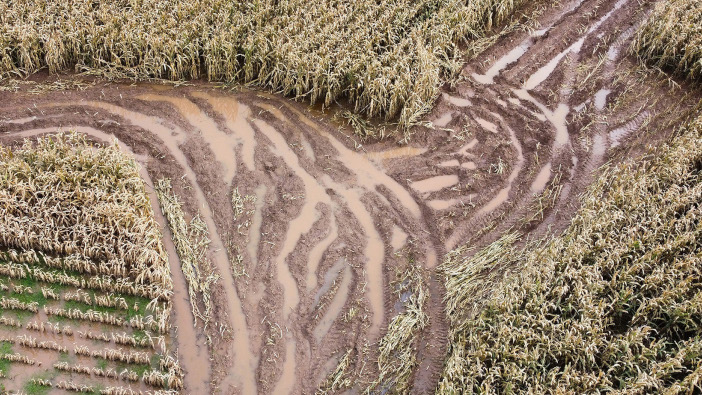ProCam is advising growers to ensure that ground is properly prepared ahead of maize planting, as the wet weather could have done significant damage.
“After several months of waterlogged conditions during which large areas of maize ground have been sitting under several inches of water, soils will need a lot of work to get them into the best possible condition ahead of drilling,” Simon Montgomery, technical lead for field operations, said.
The main issues that growers will face, he added, will be compaction, silting and nutrient losses.
“Soil compaction will be especially bad on ground which was harvested in wet conditions last autumn, or where farmyard manure has been carted onto wet fields in readiness for spring spreading. The wet conditions will also have caused valuable nutrients to be leached out of the soils, and for those left bare over the winter to silt up and become anaerobic.
“The extent of the damage will vary from field to field and according to topography and soil type, but it’s safe to assume that the majority of maize ground will need at least some remedial management to ensure the new cropping cycle starts well.
“The quickest, simplest and most cost-effective way of determining soil condition is to grab a spade and dig a test pit in a handful of locations per field.”

Alongside visual inspections, Simon recommends soil sampling to understand what nutrients have been lost, and to what extent. “Residual nutrient reserves will have been depleted by leaching, so it’s a worthwhile investment to get soils tested properly. The key is to test not only for soil-stock nutrient levels of the main macro- and micro-nutrients, but also to test for plant-available nutrients. Analytical services such as ProCam’s SoilSense test will give a more in-depth understanding of the soil, its potential, and how it should be managed.”
While farmers will be keen to get onto the field as soon as possible, Simon urged patience as ground may not be able to withstand heavy machinery at this stage. “Where possible, wait for the conditions to improve sufficiently. Otherwise, there’s a danger of inflicting further damage onto already compromised soils.”
When conditions allow, soils should be aerated to remediate the anaerobic conditions. “Incorporating manure will help to improve soil structure, but the worst affected ground might require an extra cultivation pass to break up the more severe cases of compaction or silting. Either way, there’s no point skimping at this stage in proceedings.”
He concluded by noting that workload planning will likely be a challenge this spring. “Cropping schedules and workloads are likely to be significantly hampered this spring, especially if conditions remain cool and wet for the next few weeks. There’s a danger that this year’s window for maize drilling could coincide with first cut silage making. If this happens growers should prioritise the latter to ensure they gather a good first cut of grass before focusing on maize drilling.
“If drilling is delayed by more than a week, a starter fertiliser will help the crop to catch up, but growers might also want to look at a slightly later variety of maize to suit the season’s conditions. However, there’s always a chance that the most popular varieties will sell out, so plan ahead wherever possible.
“Undersowing maize with ryegrass or Westerwolds to protect soils at harvest, and to produce a secondary forage crop, is also worth considering this year, especially if harvesting is likely to be pushed back as a result of late drilling. Grass seed can be sown between the rows of maize when the main crop is at the 4-6 leaf stage and after weeds such as fat hen and redshank have been taken out.”
For more information go to www.procam.co.uk


